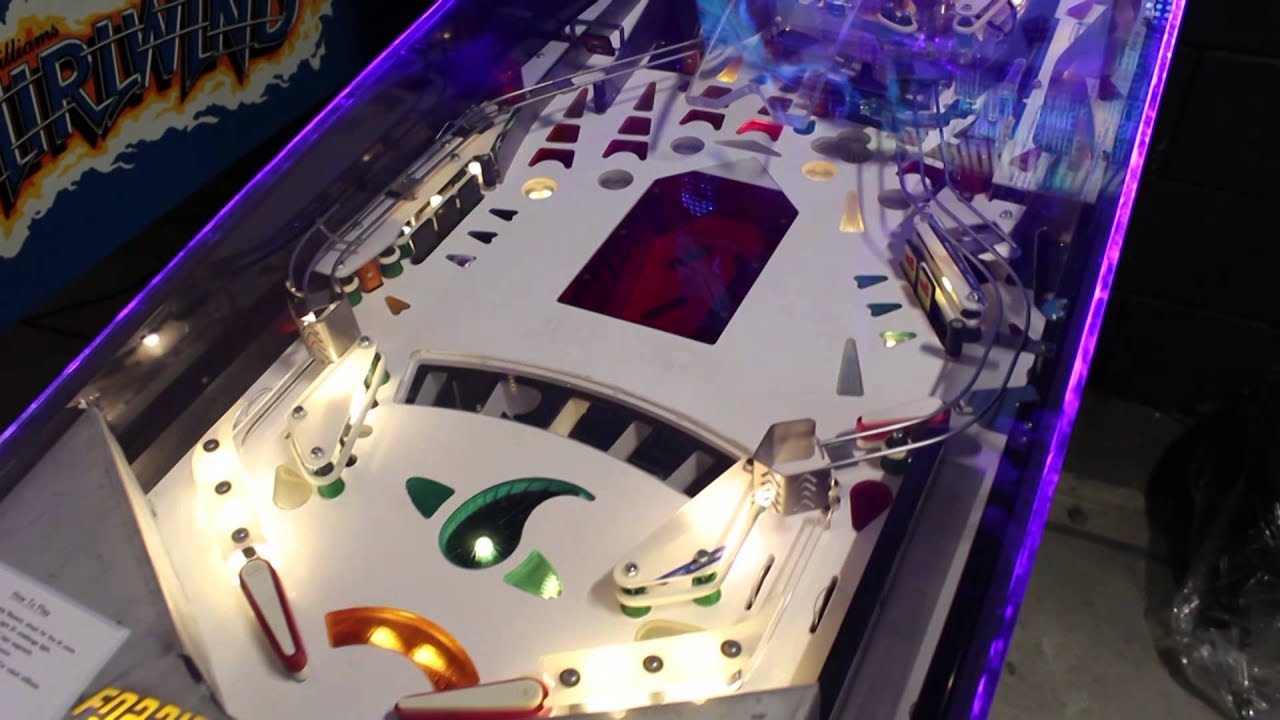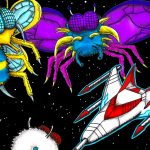Forbidden Planet Pinball – A Pin-Up That Never Was
Exploring the sci-fi pinball crossover that time forgot — until now
Pinball has always been a canvas for pop culture — a kinetic blend of art, sound, and mechanics that captures the spirit of its era. From rock bands to blockbuster films, pinball machines have paid homage to icons across decades. But one monumental 1950s science fiction film seems to have slipped through the cracks: Forbidden Planet (1956). Despite its groundbreaking visuals, iconic robot design, and lasting influence on franchises like Star Trek, there has never been an official pinball machine dedicated to this cinematic gem. Until today.
As a lifelong fan of both pinball and vintage science fiction, I’ve often wondered why Forbidden Planet hasn’t received the pinball treatment. It’s a film that redefined space opera, introduced one of cinema’s most enduring robots (Robby the Robot), and presented a lush, technicolor vision of the future that still feels fresh over six decades later. So I decided to imagine what could have been — a full-fledged pinball machine concept based on the world of Altair-4.
Why I Mashed Pinball + 1956 Sci-Fi
The idea began as a late-night rabbit hole. I was rewatching Forbidden Planet for the umpteenth time, marveling at the matte paintings, the eerie electronic score by Bebe and Louis Barron (the first entirely electronic film soundtrack), and the sleek, retro-futuristic design of the United Planets Cruiser C-57D. It struck me: this film has everything a great pinball machine needs — drama, mystery, advanced technology, and a dash of romance. The tension between Dr. Morbius’s intellect and the unseen “Monster from the Id” is pure pinball drama waiting to be translated into ramps, flippers, and multiball modes.
I began sketching concepts in my notebook — a backglass featuring the C-57D descending through swirling nebulas, Robby the Robot as a mechanical scoop target, and a hidden “Id Zone” beneath the playfield that unleashes chaos when triggered. The more I thought about it, the more I realized that Forbidden Planet isn’t just a missing pinball license — it’s a missed opportunity for storytelling through gameplay.
Pinball thrives on narrative. Whether it’s battling zombies in The Walking Dead or saving Gotham in Batman, players are drawn into a world. Forbidden Planet offers a rich narrative arc: exploration, discovery, hubris, and the dangers of unchecked subconscious desire. Imagine a pinball mode where each shot represents a deeper dive into Morbius’s subconscious, culminating in a final confrontation with the invisible monster. The thematic depth is there — it just needed someone to flip the switch.
Concept art: A fictional backglass design featuring the C-57D, Robby the Robot, and the eerie landscape of Altair-4.
Mockup of the Fictional Backglass (Vector Art)
The backglass is the soul of a pinball machine — it’s the first thing players see, and often the most memorable. For this concept, I designed a vector-based backglass that pays homage to both 1950s pulp aesthetics and the film’s sleek modernism. The composition centers on the United Planets Cruiser C-57D descending toward Altair-4, its engines glowing with a soft magenta hue. In the foreground, Robby the Robot stands guard, one arm raised in greeting, his dome reflecting the twin suns of the alien world.
Behind him, the Krell machine looms — a vast, abstract structure of glowing circuits and geometric shapes, hinting at the immense power buried beneath the planet’s surface. The sky swirls with cosmic energy, rendered in gradients of deep violet and electric blue, echoing the film’s dreamlike visuals. The title “FORBIDDEN PLANET” arcs across the top in a custom typeface that blends 1950s sci-fi lettering with pinball flair — sharp edges, subtle bevels, and a neon glow effect.
Character portraits are stylized but recognizable: Dr. Morbius with his intense gaze, Altaira in her iconic white dress, and Commander Adams in his crisp uniform. The overall palette is bold and vibrant, designed to catch the eye in a dimly lit arcade. This isn’t just a tribute — it’s a love letter to the film’s visual language, reimagined through the lens of mid-century pinball artistry.
Color Call-Outs: Robby-the-Robot Teal & Altair-4 Magenta
Color is everything in pinball. It guides the player’s eye, sets the mood, and creates emotional resonance. For this concept, I anchored the palette around two key hues drawn directly from the film: Robby-the-Robot Teal and Altair-4 Magenta.
Robby-the-Robot Teal (hex #00CCCC) is a bright, optimistic cyan that mirrors the robot’s friendly demeanor and advanced design. It’s used for accents on the playfield, LED lighting around Robby’s figure, and as a highlight in the backglass. This teal evokes both the technological optimism of the 1950s and the clean, futuristic look of Robby’s polished chassis.
Altair-4 Magenta (hex #FF00CC) is a bold, otherworldly pink-purple that appears in the film’s alien landscapes and energy effects. It’s used for the Id Zone lighting, the Krell machine animations, and as a flashing warning during the “Monster from the Id” multiball mode. This magenta adds drama and tension — a visual cue that something powerful and unpredictable is at play.
Robby-the-Robot Teal
#00CCCC
Altair-4 Magenta
#FF00CC
Space Black
#000000
C-57D White
#FFFFFF
Complementary shades include Space Black for depth and contrast, and C-57D White for clean, futuristic elements. Together, these colors create a palette that’s both nostalgic and striking — perfect for a machine that bridges the gap between classic sci-fi and modern pinball design.
Bonus Vector Set: Vector Pinball Plastics (Free .SVG)
To bring this concept to life, I’ve created a free downloadable set of vector assets inspired by the machine’s hypothetical playfield plastics. These .SVG files include:
- Robby the Robot silhouette insert
- Krell Machine schematic decal
- Altair-4 planetary emblem
- “Monster from the Id” warning light
- United Planets logo badge
Each design is crafted with clean lines and bold colors, optimized for laser cutting or printing on acrylic. Whether you’re a pinball modder, a 3D printer enthusiast, or just a Forbidden Planet fan, these assets are yours to use, remix, and display.
Download the Free Vector Pinball Plastics Pack
Includes 5 high-resolution .SVG files for personal and non-commercial use.
Download Now (ZIP, 1.2MB)Reader Poll: Which 1950s Film Deserves Its Own Pin Next?
Forbidden Planet may be the most glaring omission, but it’s far from the only 1950s sci-fi classic that deserves a pinball tribute. The decade was packed with visionary films that pushed the boundaries of imagination — and each could inspire a unique pinball experience.
So I’m putting it to you, the readers: which 1950s film should get the pinball treatment next? Vote below and help shape the future of retro sci-fi pinball!
Which 1950s Film Should Be a Pinball Machine?
Imagine the possibilities: a Day the Earth Stood Still machine with Gort as a magnetic scoop, or a War of the Worlds edition where heat-ray ramps light up the playfield in pulsing red. The 1950s were a golden age of atomic anxiety and space dreams — and pinball is the perfect medium to resurrect them in flashing lights and clattering steel balls.
As I finish this concept and look at the backglass mockup glowing on my screen, I can almost hear the chimes, the buzz of the solenoids, the satisfying clack of the flippers. Maybe one day, a real manufacturer will pick up the torch. Until then, this fantasy machine lives on — in vector art, in color swatches, and in the imaginations of sci-fi and pinball lovers everywhere.
After all, the best pinball machines don’t just entertain — they transport. And few worlds are more worthy of transport than Altair-4.









